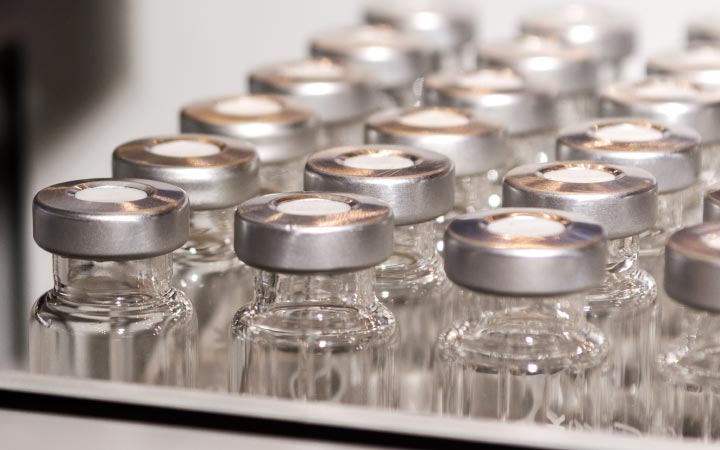CBRN countermeasures and surveillance
Crucial aspects of dealing with biological pathogens or chemical weapons are detection and rapid response. Our world-leading Chemical, Biological, Radiological and Nuclear (CBRN) Countermeasures and Surveillance capability involves developing advanced sensing technologies covering deposited contaminants and airborne agents. We draw expertise from engineering, computing and information systems, biosciences, chemistry and physics enabling end-to-end technology developments, at scale.
We are the lead collaborator of Defence in the area of biothreat forecasting and surveillance and are partner to ongoing activities under the DMTC medical countermeasures program. The University’s Peter Doherty Institute for Infection and Immunity is a world leading capability for the development of infectious disease mitigation and understanding.
Our capabilities
- Medical countermeasures
- Wearable technologies
- Low size weight and power sensors
- Anti-microbial nanomaterials
- Bio-surveillance
- Heterogeneous data fusion and end-to-end knowledge management tool development
Research impact
- Treatment strategies for several tropical diseases including malaria
- 35 clinical trials for viral infections – including HIV, hepatitis B, hepatitis C and cytomegalovirus
- Polymer-based drug for antimicrobial resistant pathogens
- SARS-CoV-2 vaccine development
- Leading COVID-19 therapeutic, diagnostic and epidemiological capability
- Antibiotic combat wound dressing
- “EpiDefence” and “EpiFX” infectious disease forecasting tools
- Advanced diamond material quantum sensing approaches
- Paper-based microfluidic devices for deposited chemical contaminants
- Miniaturised fluoresence spectroscopy for threat aerosol detection and identification
- Wearable multi-spectral imaging camera for deposited chemical contaminant identification
- Novel nanomaterial coating approaches with chemical/biological threat resistance properties
- Novel nanomaterial coating approaches with chemical/biological threat neutralisation properties
- Advanced optical filter materials and light sources toward ultra-miniaturised spectroscopy
- Gas selective membrane technology
The University of Melbourne has extensive expertise in the field of medical countermeasures. The Melbourne Biomedical Precinct is a leading global research and teaching powerhouse, and one of the top-five biomedical precincts in the world.
It includes the operation of a high containment laboratory and clinical facilities as part of the Peter Doherty Institute for Infection and Immunity. Precinct partners also share a formidable history of relevant ground-breaking medical discoveries and developments.
Case study: EpiFx and EpiDefend

This ground-breaking program led by Professor James McCaw develops mathematical and computational models of the spread of infectious diseases through a population and the impact of pharmaceutical countermeasures, such as vaccines and antiviral drugs.
These models are combined with advanced computational statistical algorithms to provide situational awareness and give real-time predictions on the spread of infection of natural or bioterror-related pathogens.
The results are applied in scenario analyses to develop policy recommendations on optimal use of available resources at a national scale – and help design future vaccine responses.
Analysis of that data shows us how quickly a virus is spreading and points us to initiating an appropriate and proportionate response. Professor James McCaw, The University of Melbourne